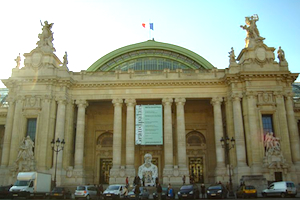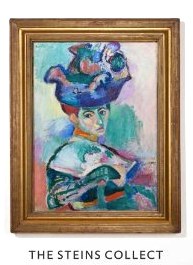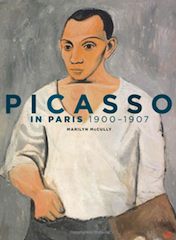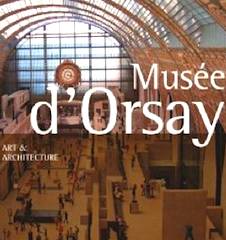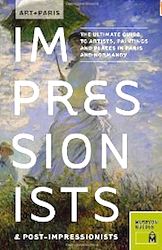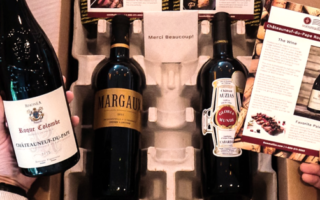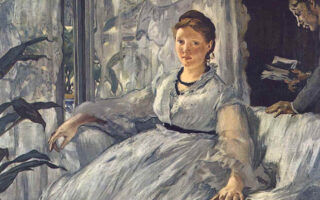Review: Grand Palais Presents “Matisse, Cezanne, Picasso…L’aventure des Stein”
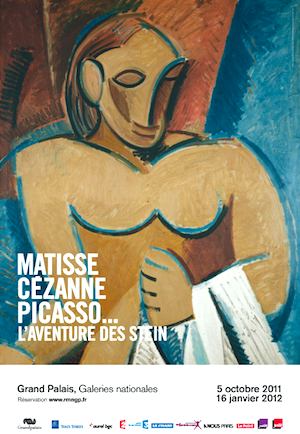
- SUBSCRIBE
- ALREADY SUBSCRIBED?
BECOME A BONJOUR PARIS MEMBER
Gain full access to our collection of over 5,000 articles and bring the City of Light into your life. Just 60 USD per year.
Find out why you should become a member here.
Sign in
Fill in your credentials below.
 Matisse, Cézanne, Picasso… L’aventure des Stein
Matisse, Cézanne, Picasso… L’aventure des Stein
Grand Palais, Galeries Nationales until January 16, 2012
The Grand Palais has a well-established reputation for presenting blockbuster exhibitions and their current show, Matisse, Cézanne, Picasso… L’aventure des Stein, immediately drew international attention.
The Grand Palais joined with the San Francisco Museum of Modern Art and the Metropolitan Museum of Art in New York (“The Met”) to create this major exhibition with about 200 paintings, sculptures, drawings, and printed articles by Matisse, Cézanne, Picasso, Renoir, Toulouse-Lautrec and many other influential early 20th-century modern artists. The traveling exhibition opened first in San Francisco last May as “Steins Collect.” Michael and Sarah Stein had close ties to the San Francisco Museum of Modern Art after moving to Palo Alto leaving Paris.
So who were the Steins? In short they were California siblings, Gertrude, Leo and Michael (later joined by wife, Sarah) who inherited money from their father, a railroad and real estate investor. Leo and Gertrude first moved to Paris at the very start of the 20th century; Michael and Sarah followed in 1904. All collected the newest, unhailed avant-garde art of their time, the first half of the twentieth century.
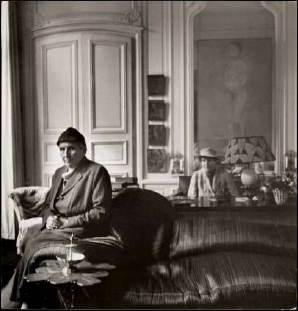 “It’s really impossible to overestimate the role of this eccentric American family as patrons of visual art in early 20th-century Paris,” says co-curator Janet Bishop of SFMOMA. “The Steins were true champions of modernism, embracing and defending new art as it was first being made and before it was met with widespread acceptance. They not only avidly collected works when the artists most needed support, but also enthusiastically opened their modest Left Bank homes to anyone wishing to see the most radical art of the day.”
“It’s really impossible to overestimate the role of this eccentric American family as patrons of visual art in early 20th-century Paris,” says co-curator Janet Bishop of SFMOMA. “The Steins were true champions of modernism, embracing and defending new art as it was first being made and before it was met with widespread acceptance. They not only avidly collected works when the artists most needed support, but also enthusiastically opened their modest Left Bank homes to anyone wishing to see the most radical art of the day.”
Gertrude’s literary accomplishments established her as the best known of the siblings. Her controversial literature career smashed societal taboos and literary rules, with techniques such as automatic writing. Her most popular book, Autobiography of Alice B. Toklas, was about the life of her lesbian partner. Filmmaker Woody Allen recently returned Gertrude Stein to the mainstream by including her as a character in Midnight in Paris, his cinematic ode to Literary Paris.
Leo sparked the Steins’ interest in art collecting after he spent a year in Florence after reading the History of Art and Philosophy at university and taking a world tour. His new world awareness turned him into an art cconnoisseur, noted art critic and, initially, collector of reproductions of Renaissance works. It didn’t take long for him to become hooked and soon the entire Stein family joined him in collecting art, quickly assembling a remarkable collection of art created by artists they befriended.
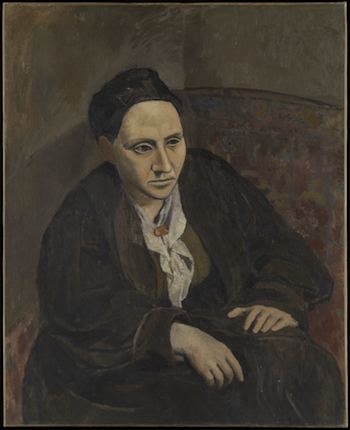 When the Steins moved to Paris in 1902 they quickly formed friendships with artists, poets and bohemians. On Saturdays Gertrude and Leo hosted open house “salons” at their home on 27, rue de Fleurus in the Paris 6th, where guests were encouraged to philosophize, inspire, create and of course to eat drink and be merry. The residence walls became a private art gallery, and pictures in the Grand Palais exhibition show the walls of the Stein home adorned with a wealth of work by Manet, Renoir, Degas and Cezanne, considered by art historians the pillars of modern art who are considered by many art historians to be the pillars of modern art.
When the Steins moved to Paris in 1902 they quickly formed friendships with artists, poets and bohemians. On Saturdays Gertrude and Leo hosted open house “salons” at their home on 27, rue de Fleurus in the Paris 6th, where guests were encouraged to philosophize, inspire, create and of course to eat drink and be merry. The residence walls became a private art gallery, and pictures in the Grand Palais exhibition show the walls of the Stein home adorned with a wealth of work by Manet, Renoir, Degas and Cezanne, considered by art historians the pillars of modern art who are considered by many art historians to be the pillars of modern art.
Michael and Sarah, meanwhile, focused on collecting work by their friend, Henri Matisse. In fact, they sponsored the first U.S. exhibition of Matisse’s works soon after they returned to Northern California in 1935.
It is not certain whether the artists in this exhibition became successful because of the Steins or if the family just had a good eye for who was going to make it big. Either way, the resulting collection is like a crash course in modern art that spans some of the most important movements in visual art including Post-impressionism, Cubism, Post-cubism and Neo-romanticism.
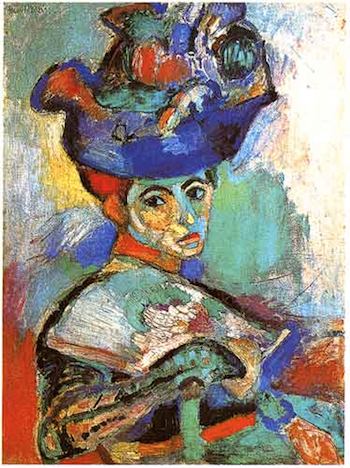 This exhibition is not about a rich family who splashed their cash, they took risks on art they loved and believed in. One of the most important pieces in the collection, the iconic “La Femme au Chapeau” (Woman with a Hat) by Matisse was a dramatic turning point for modern art when originally displayed at the 1905 Salon d’Automne, also held at the Grand Palais. Although it seems quite vanilla today, at the time the model’s moody stare and the psychedelic colors applied directly from paint tube to canvas upset many in the art world. Public response was strong, with critical comments that reflected anger and repulsion. Art critic Louis Vauxcelles described the painting as a “nasty smear of paint” and he labeled the artists “fauves” (wild beasts). Matisse and a small group of other artists influenced by the styles of Van Gogh, Picasso and Gauguin adopted the name as a badge of honor and thereafter called themselves “Fauvists.” For Leo Stein such criticism was a deal breaker and pushed him to commit his support to this new generation of “Fauvists.”
This exhibition is not about a rich family who splashed their cash, they took risks on art they loved and believed in. One of the most important pieces in the collection, the iconic “La Femme au Chapeau” (Woman with a Hat) by Matisse was a dramatic turning point for modern art when originally displayed at the 1905 Salon d’Automne, also held at the Grand Palais. Although it seems quite vanilla today, at the time the model’s moody stare and the psychedelic colors applied directly from paint tube to canvas upset many in the art world. Public response was strong, with critical comments that reflected anger and repulsion. Art critic Louis Vauxcelles described the painting as a “nasty smear of paint” and he labeled the artists “fauves” (wild beasts). Matisse and a small group of other artists influenced by the styles of Van Gogh, Picasso and Gauguin adopted the name as a badge of honor and thereafter called themselves “Fauvists.” For Leo Stein such criticism was a deal breaker and pushed him to commit his support to this new generation of “Fauvists.”
One of the rooms in the exhibition includes depictions of the Stein salons, the most poignant being, “Appollinare et Ses Amis,” which shows a group of friends with Gertrude Stein. Over time the Steins narrowed their social circle and started building strong relationships with specific artists. For Gertrude it was Picasso, whilst for Michael and his wife Sarah it was Matisse, the exhibition includes two rooms that explore these friendships.
While spending time with Gertrude, Picasso developed his ideas for “Les Demoiselles d’Avignon,” a masterpiece that changed his career and, arguably, art forever. The exhibition shows highlights of each stage of his career, including his “Blue Period” and “Cubism.”
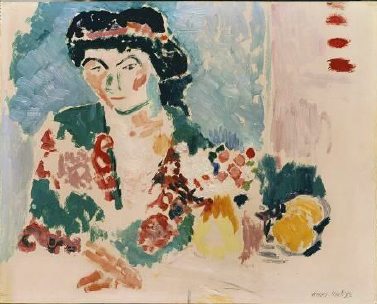 Michael Stein and wife Sarah, who lived on nearby rue Madame, became dedicated Matisse collectors. The size of their collection and the variety of paintings it holds is impressive enough to stand as a separate exhibition in its own rite.
Michael Stein and wife Sarah, who lived on nearby rue Madame, became dedicated Matisse collectors. The size of their collection and the variety of paintings it holds is impressive enough to stand as a separate exhibition in its own rite.
The exhibition shows a breadth of work that rarely seen in permanent or public collections. It provides the viewer a valuable opportunity to make direct links and comparisons between the same artists as they painted the same subjects experimented with the same techniques. Great examples of this are self-portraits of Picasso, Matisse and Cezanne all painting around the same time. There are also a large number of nudes, mainly the beautiful women who were muses to the Stein’s artist friends. It was obviously a subject the Steins adored and the exhibition allows the viewers to compare them side-by-side.
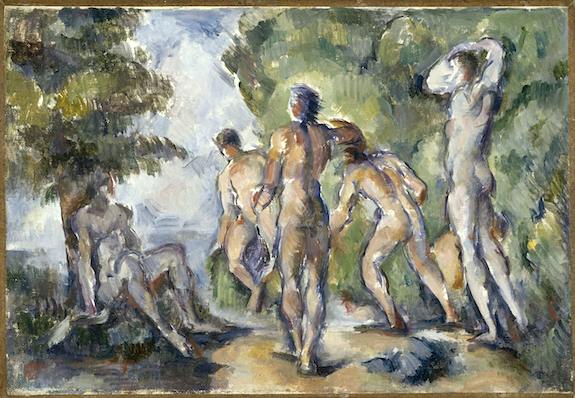 There is also the rare opportunity to see Degas’ beautiful studies in preparation for his famous paintings of ballet dancers as well as Cezanne’s sketches for “Les Baigneurs” (The Bathers). This exhibition is a must for any art-lover, whether interested in Stein’s art or today’s artists who have been inspired by it.
There is also the rare opportunity to see Degas’ beautiful studies in preparation for his famous paintings of ballet dancers as well as Cezanne’s sketches for “Les Baigneurs” (The Bathers). This exhibition is a must for any art-lover, whether interested in Stein’s art or today’s artists who have been inspired by it.
Suggestion: buy reserved tickets online to reduce wait time
The queues for the last big show at the Grand Palais, Anish Kapoor’s “Momenta,” seemed endless and many disappointed visitors were turned away. It will come as no surprise then that a show with ‘Matisse, Cézanne, Picasso’ in the title is already attracting a lot of interest, so it is definitely worth a few extra Euros to buy tickets online to avoid standing in line outside.
The Grand Palais exhibition runs until January 16, 2012 and it will be presented at The Metropolitan in New York from February 1 to June 3, 2012.
Grand Palais, L’Aventure des Stein
Tél: 01 4413 1717
Main entry: 3, avenue Winston-Churchill, Paris 8th
Hours (see site for holiday & school holiday hours)
- Tuesdays 9am-2pm.
- Wednesdays 10am-10pm.
- Thursdays 10am-8pm.
- Fridays to Monndays: 9:00AM-11:00PM.
Admissions close 45 minutes before exhibition closing.
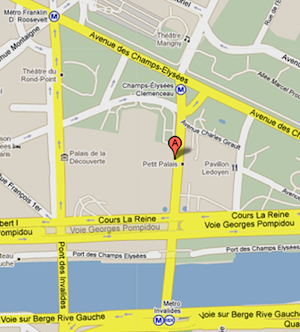 Entry fee: 12€ adults. Discounts for students, seniors, persons with disabilities—consult site for details.
Entry fee: 12€ adults. Discounts for students, seniors, persons with disabilities—consult site for details.
Métro: lines 1, 9, 13 / Stations : Franklin D. Roosevelt, Champs-Elysées-Clémenceau
RER: Line C, Station: Invalides
Bus: Lines 28, 42, 52, 72, 73, 80, 83, 93
Accessibility: enter main Grand Palais exhibition areas via administrative entry on avenue Winston Churchill; wheelchair rent (call to confirm availability)
PHOTO CREDITS:
Cecil Beaton, Gertrude Stein ; Alice B. Toklas, 1936. Bromure, 24 x 23,7 cm. Londres, National Portrait Gallery. ©Courtesy of the Cecil Beaton Studio Archive at Sotheby’s
Paul Cézanne, Les baigneurs, vers 1892. Huile sur toile, 22 x 33 cm. Lyon, Musée des Beaux Arts, dépôt du musée d’Orsay. ©Service presse Rmn-Grand Palais (Musée d’Orsay) / René-Gabriel Ojéda
Henri Matisse, Femme en Kimono, v. 1906. Huile sur toile, 80.65 x 59.69 cm. The Courtauld Gallery, Londres, Grande Bretagne. ©Succession H. Matisse. Photo : The Courtauld Gallery, London, 2011
Henri Matisse, Femme au chapeau, 1905. Huile sur toile, 80.65 x 59.69 cm. San Francisco Museum of Modern Art, don d’Elise S. Haas, San Francisco, USA. ©Succession H. Matisse. Photo : Moma, San Francisco, 2011
Pablo Picasso, Gertrude Stein, 1906. Huile sur toile, 10 x 81.3 cm. Metropolitan Museum of Art, New York, USA. ©Succession Picasso 2011
Lindsey Marsh is the BonjourParis arts editor at large. Please click on her name to view her past stories published here.
Subscribe for FREE weekly newsletters with subscriber-only content.
BonjourParis has been a leading France travel and French lifestyle site since 1995.
Readers’ Favorites: Top 100 Books, imports & more at our Amazon store
Want to know more about art with a France connection? Please click on any image for more details.
Thank you for using our link to Amazon.com…we appreciate your support of our site.
